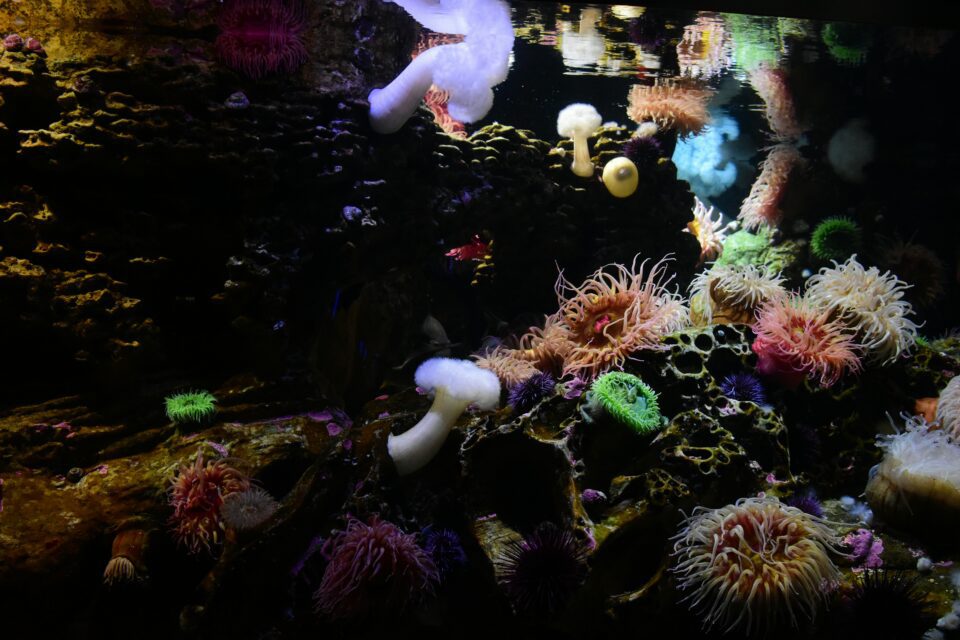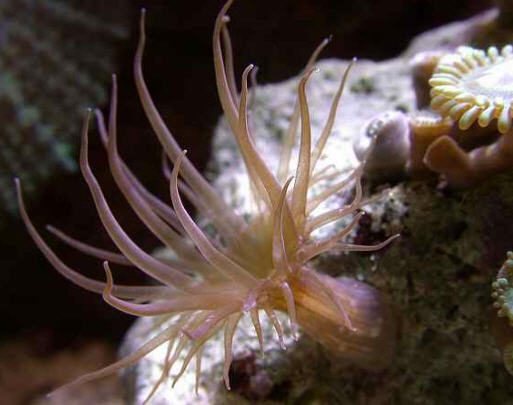Everything you need to know about mixing and storing saltwater for your saltwater aquarium.
Making water is one of the more difficult parts of owning a saltwater aquarium. You can always buy it from your local fish store (at Artistic Oceans we mix hundreds of gallons daily for our customers), but at a certain point it starts making sense to make it yourself.
Making saltwater comes down to just a few key details
- Base RO water
- The salt mix
- Actually mixing the saltwater
- Storing saltwater
What is RO Water and how do I get it?
RO stands for reverse osmosis, but usually when people say RO they are using it as slang for RODI (reverse osmosis deionized water). This is water that has been stripped of almost all impurities and is as close to H20 as possible for our hobby.
You can buy a myriad of rodi systems for your tank. Which one you buy is completely up to you and are usually a tradeoff of volume of water vs cost. Some are small, some are bigger but all work the same.
They all work in the same way. You basically take water from your house into the system, it separates the waste water from the “pure” water and outputs the pure water into your storage container. This wastes some water in the form of the pollutants, uses up the filters and takes time. RODI water can take hours or days to make enough for your water change.
The key to RODI water is low TDS. TDS is total dissolved solids. This is a measurement for how pure the water is. You want to keep that at 0. There are handheld testers and in-line testers that measure this. Use whichever you want but when that number moves above 0, its time to change your filters.
Which salt is right for you?
Now that you have your pure RODI water, we need to find some salt to mix into it. This is an important choice. There are dozens of different salts… Some have elements added, some have higher or lower alkalinity, some store better than others, some mix faster, some cannot be heated… the list goes on and on.
There is no simple rule to pick your salt, but it is usually based on coral. Fish only tanks really have no need for expensive or special salt mixes. Usually whatever is cheapest for you is your best option. When you have corals, it comes down to what kind of corals, how many elements are used, how often you do water changes, if you’re dosing or not…. there are many elements that come into picking the right salt.
The good news is that you can change the salt mixture at any time, at a certain level, salt is salt. Your best bet is to talk to your local fish store and find a brand they have in stock reliably that suits your needs and use that as a starting point. Nothing worse than finding your favorite brand out of stock online, which happens often.
Mixing the saltwater
Yes, there is a right and a wrong way to mix your saltwater. It’s not hard, but you can cause headaches for yourself.
First thing is to make sure that your RODI water is in a clean, non leeching container. 5 gallon buckets and Brute trash cans are aquarist favorites. Something with an airtight lid for storage after mixing is a big bonus.
Next thing is that you need to have the water “mixing”, a circulation pump or a power head work just fine for this. Make sure it is sized appropriately for your container size though. You can also add a heater into this container if youre planning on doing a water change as soon as the water is ready. Be warned many heaters will melt plastic if they touch for too long and some salts don’t do well with heating elements inside them before they are fully mixed.
Now you need to actually pour the salt into the container. With the mixing pump on, slowly feed salt into the water. Adding large clumps will cause a chemical reaction that will make your mix not ideal for your tank. It can also cause it to shell over and protect clumps at the bottom of your container to stay unmixed. A slow, steady stream is best.
At this point you need to follow your salts instructions. Some need to be mixed for quite awhile, some clear up pretty fast. It really depends on the brand and what additives they have in the water.
How long can you store saltwater?
This also depends on the salt mix. As a rule of thumb, the more basic the saltwater the longer it lasts. Certain high end brands like Tropic Marin, or the Red Sea Pro mixes have lots of quality elements and biologicals mixed in, these tend to precipitate (when elements solidify like hard water on the inside of the container) more than the less complex salts.
That being said, basic salt mixes can last for a month or more if they are regularly being mixed, or at least are mixed before being added to the tank.
Clues that your salt is too old include algae in the container, salinity being different then when it was mixed, and excessive precipitation on minerals on the container. As a rule of thumb you want to use the water within a month if its a more basic blend, and within a week if its a more premium or exotic blend.
Other random tidbits
A few other things that come up with saltwater mixes. We have found phosphate issues in tanks where the RO water was actually the source. If you are hunting for phosphates, test your water mix. Also any kind of metal that can rust, even if its not in the container but it can drip into it can and will cause high phosphates. Clean is the name of the game.
When setting up mixing stations stay away from home improvement store check valves. These have metal in them that will rust over time and add pollutants to your tank.
Any storage container of saltwater needs to be cleaned periodically. While an RO container may stay clean for years or more, once salt is added life starts to bloom, so keep the containers clean.
Conclusion
Mixing saltwater isn’t the easiest part of the hobby, but it isn’t that difficult. Get a system in place and you will have an endless supply of quality saltwater for your reef tank. And if you happen to live in Las Vegas or Henderson and need RODI water for your auto top off or mixed saltwater for your tank, and don’t want to mix it yourself, we always have it on hand ready for you!




